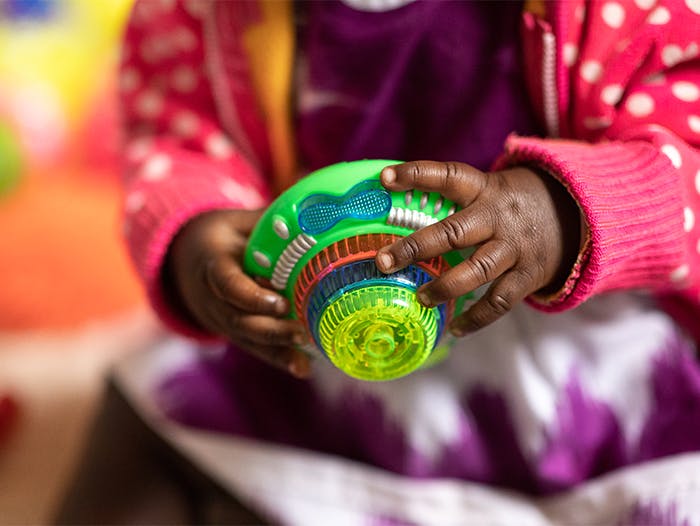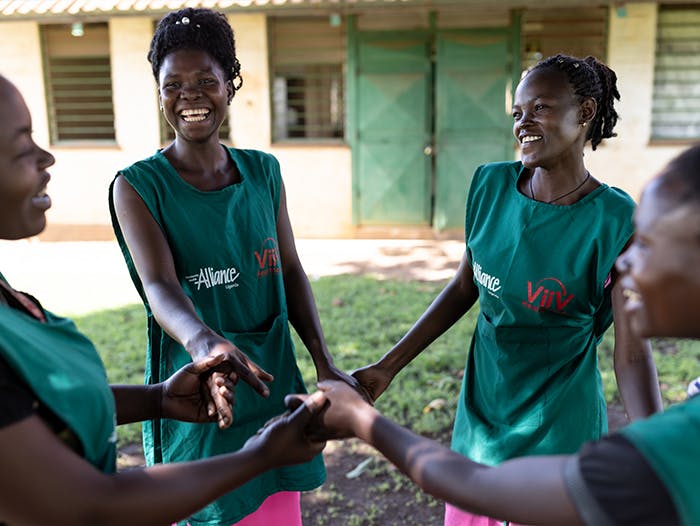CARE AND TREATMENT OF PAEDIATRIC HIV
Paediatric HIV remains a global issue. In 2024, an estimated 1.4 million children under 15 years old were living with HIV, and the majority of AIDS-related deaths occur during the first five years of life.1,2 Major obstacles that impact children living with HIV include continued vertical transmission, the limited availability of testing, slow initiation of treatment and poor availability of child-friendly formulations.3,4
At ViiV Healthcare, the care and treatment of children living with HIV is one of our key strategic priorities to accelerate the paediatric HIV response and meet the UN target to end paediatric AIDS by 2030. To achieve this, we are focussed on developing and improving access to child-friendly formulations of our medicines, as well as supporting communities to deliver specialist paediatric and maternal health services.
“As part of ViiV Healthcare’s global health commitment to leave no person living with HIV behind, we’re working to address the gaps in paediatric HIV treatment and management of care.”
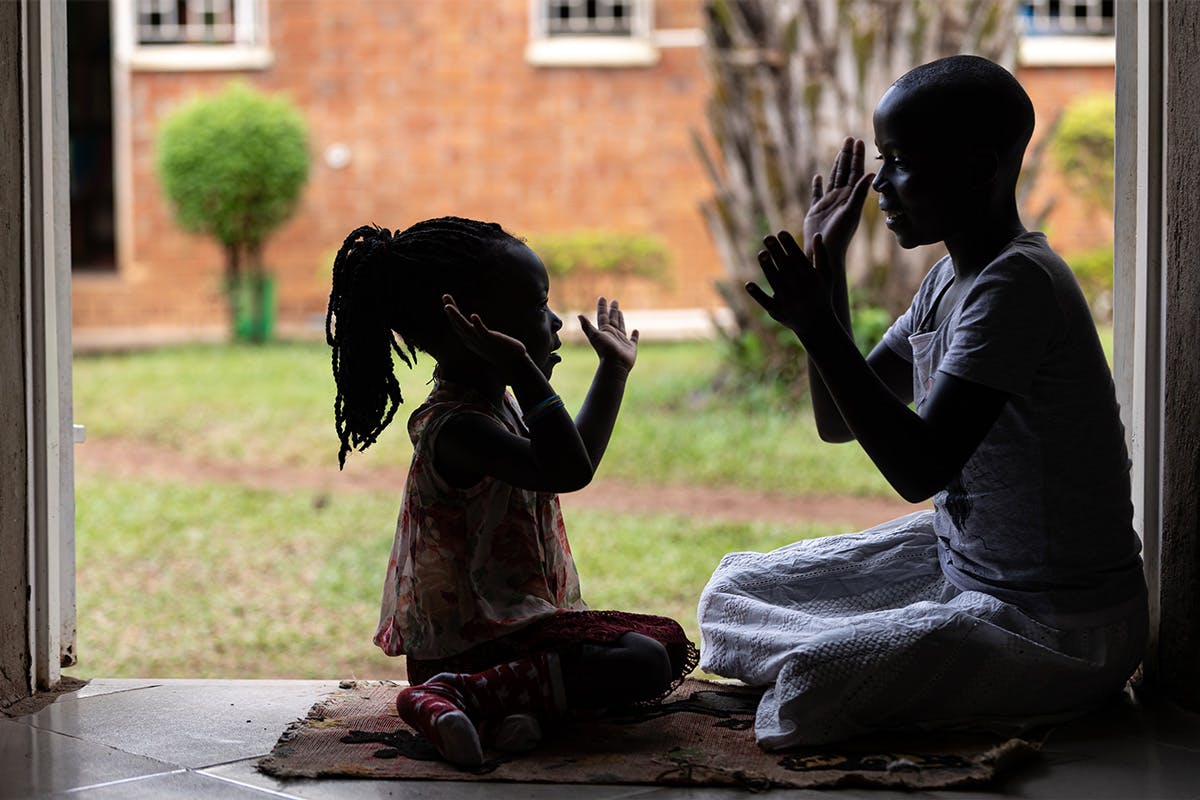
Positive Action partner, TASO, Uganda
Research and development
Age-appropriate formulations are essential to ensure that infants and children around the world have access and can adhere to HIV treatment. Our scientists are dedicated to developing optimised paediatric formulations that cater to the needs of children as they grow. The development of WHO-led Paediatric Antiretroviral Drug Optimisation (PADO)-prioritised paediatric formulations is a priority for ViiV Healthcare, and we are continually working with the HIV community to better understand how we can accelerate development, registration and ultimately access to optimised paediatric antiretrovirals.
We work closely with partners to drive the development and study of paediatric formulations, including:
- Our collaboration with the International Maternal Pediatric Adolescent AIDS Clinical Trials Network (IMPAACT), enabled us to further research into an age-appropriate formulation of dolutegravir (DTG).
- We worked with Paediatric European Network of Treatment of AIDS (Penta) to deliver a dispersible tablet formulation of DTG, as well as a simplified dosing regimen for paediatric HIV patients.
- We are always looking to the future. We provide funding to the Penta EPIICAL Consortium, to help find remission and cure strategies for children living with HIV.
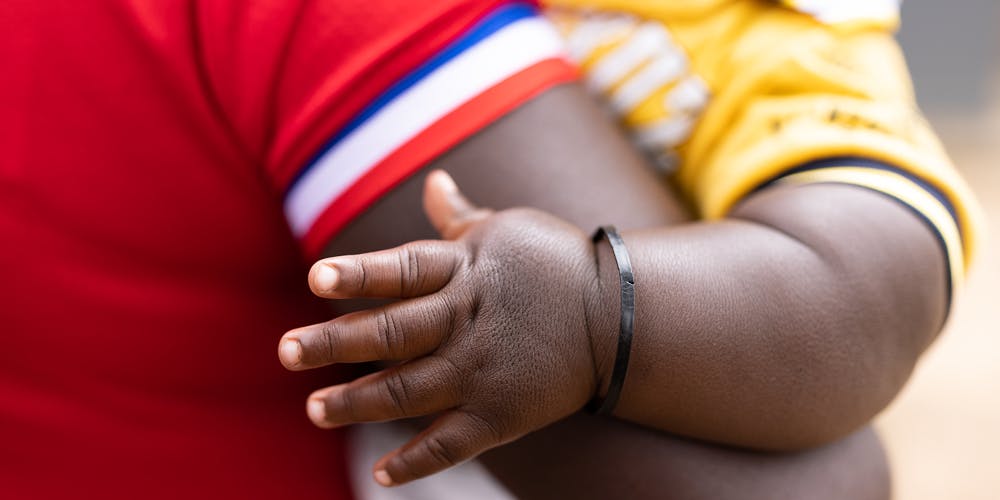
Positive Action partner, Breakthrough partnership, Uganda
Accelerating access
Children are still disproportionately affected by HIV and in 2021, only 52% of children living with HIV were on antiretroviral treatment, compared to 76% of adults.1 Improving access to paediatric medicines is key to closing the gap for children living with HIV, and we continue to work with partners to ensure our innovations can reach children where they are.
Currently 14 generic manufacturers hold voluntary licences for paediatric formulations of DTG: one direct licence and 13 through the Medicines Patent Pool.5,5 These agreements enable generic manufacturers to develop paediatric formulations of abacavir and dolutegravir in the 123 countries where 99% of children living with HIV live.6
ViiV Healthcare and Unitaid/CHAI have established two public-private partnership programmes, each working with two generic manufacturers to expedite the development and market entry of more affordable child-friendly formulations. As a result, by the end of 2022, generic formulations of paediatric dolutegravir were available in 73 low- and middle-income countries – just two years after the first generic product received US FDA approval.
We also have a broad registration footprint designed to help accelerate access to our medicines and support the introduction of generic versions in countries covered by our voluntary licences.
Our work is focused on priorities set by the World Health Organization (WHO)-led Paediatric ARV Drug Optimisation (PADO) group. We collaborate with other major partners in the HIV community such as the International AIDS Society (IAS) as the founding and major sponsor of the Collaborative Initiative for Paediatric HIV Education and Research (CIPHER) – now the IAS platform for Paediatric HIV. The Elizabeth Glaser Pediatric AIDS Foundation (EGPAF) is another close partner who we work with to increase access to life-saving medicines for children.
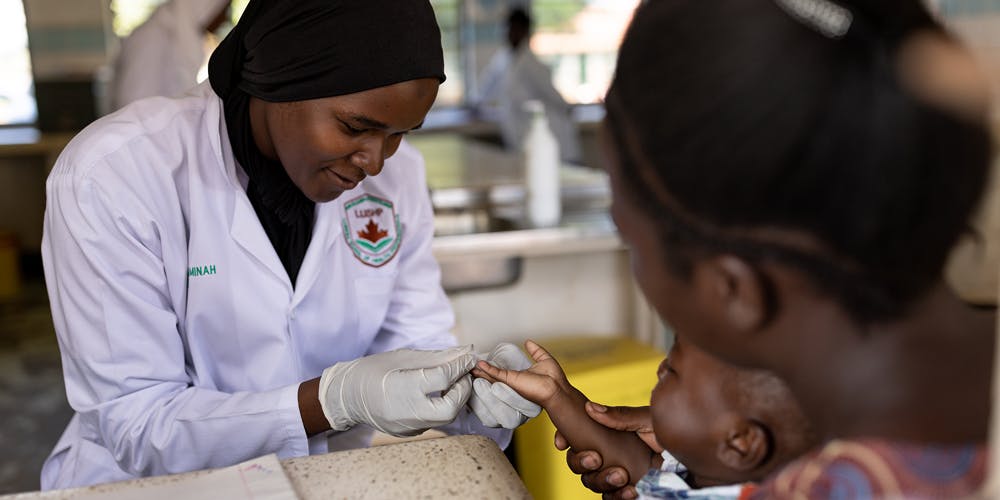
Positive Action partner, CHAU, Uganda
Working with communities
Our grant-giving corporate programme, Positive Action, furthers our mission of ensuring no person living with HIV is left behind, by working directly with communities most affected by HIV. Forming a central part of the 2020-2030 strategy, Positive Action’s paediatric focus is the location, initiation and retention of children and young people in HIV services and improving maternal health. Positive Action invests in and works with community-based organisations to improve the wellbeing of mothers, adolescents and children living with HIV and implement interventions to prevent vertical transmission.
Positive Action’s paediatric funding is delivered to countries with the greatest burden of paediatric HIV including Uganda, Kenya, Zimbabwe, Cameroon, South Africa, Nigeria, and Mozambique. Since 2020, we have contributed £15.58M to the paediatric HIV response in these countries and beyond.
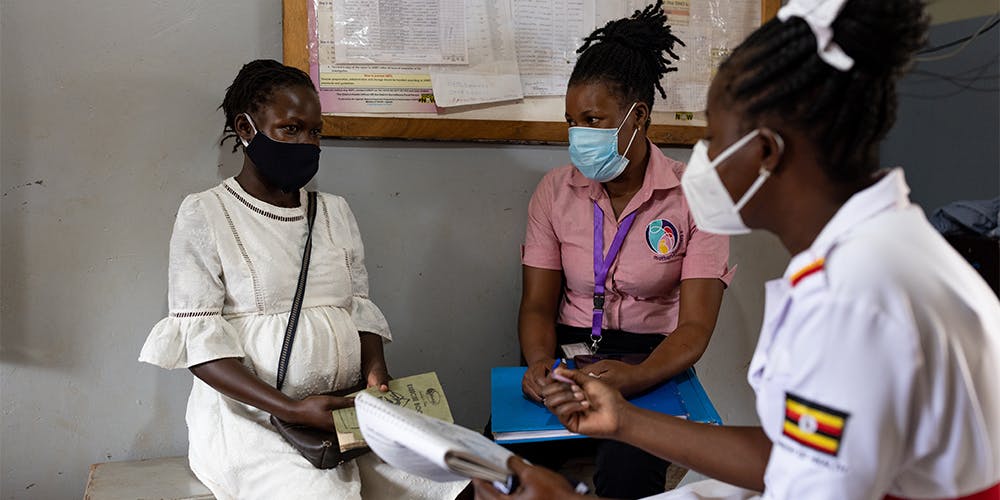
Positive Action partner, mothers2mothers, Uganda
Paediatric Breakthrough Partnership
The Paediatric Breakthrough Partnership aims to end paediatric AIDS in Mozambique, Nigeria and Uganda with partners Aidsfonds, UNICEF, Pediatric-Adolescent Treatment Africa (PATA) and the Elizabeth Glazer Pediatric AIDS Foundation (EGPAF). The partnership is driving progress through the development of sustainable and replicable interventions, that are informed by the paediatric HIV service delivery tool, “Improving HIV Service Delivery for Infants, Children and Adolescents: A framework for country programming”. This tool has been deployed within the context of existing national plans, and implementation is incorporated with ongoing efforts to integrate paediatric HIV services into broader child health platforms and also link them to prevention programmes.
Through collaboration, progress and implementation, the Breakthrough Partnership aims to:
- End paediatric AIDS in priority locations, through supporting the implementation of sustainable and replicable quality package of interventions.
- Develop and amplify evidence that a collaborative approach to paediatric HIV services works.
- Expand advocacy and collaborate to adopt quality improvements in service delivery for testing, treatment and retention in care for children and adolescents.
- Mobilise additional resources and provide technical assistance and opportunities for linking and learning to national governments in-country implementing partners and key stakeholders to adopt the approaches.
Find out more about Positive Action here.
References:
- UNAIDS. Global HIV & AIDS Statistics – 2025 Fact Sheet. Available at: https://www.unaids.org/en/resources/documents/2025/UNAIDS_FactSheet Accessed July 2025
- UNAIDS. Get on the fast-track. The life-cycle approach to HIV. Available at: https://www.unaids.org/sites/default/files/media_asset/Get-on-the-Fast-Track_en.pdf. Accessed May 2023
- UNAIDS. Children and HIV – 2016 Fact Sheet. Available at: https://www.unaids.org/sites/default/files/media_asset/FactSheet_Children_en.pdf. Accessed: May 2023.
- UNAIDS. Get on the fast-track. The life-cycle approach to HIV. Available at: https://www.unaids.org/sites/default/files/media_asset/Get-on-the-Fast-Track_en.pdf. Accessed: May 2023.
- Medicines Patent Pool. Dolutegravir – Adult (DTG). Available at: https://medicinespatentpool.org/licence-post/dolutegravir-adult-dtg/. Last accessed: May 2023.
- ViiV Healthcare. Five years on, 3.9 million people in the developing world have access to HIV treatment dolutegravir, thanks to access-oriented voluntary licensing agreements. Available at: https://viivhealthcare.com/hiv-news-and-media/news/press-releases/2019/july/five-years-on--3-9-million-people-in-the-developing-world-have-a/. Last accessed: May 2023.
YOU MAY ALSO BE INTERESTED IN:
We know that health systems increasingly have the resources to address mother-to-child transmission (MTCT) of HIV; but, in practice, these resources often go under-utilised.
We don’t often talk about HIV in children, yet looking at the latest global statistics from UNAIDS, 1.7 million are currently living with HIV.
Positive Action Global’s mission is to be a transformational partner that champions people and communities to end AIDS. Our vision is Healthy Communities in a World Free of AIDS.
NP-GBL-HVX-COCO-220040
If you get any side effects, talk to your doctor, pharmacist, or nurse. This includes any possible side effects not listed in the package leaflet. You can also report side effects directly via the GSK Reporting Tool link https://gsk.public.reportum.com/. By reporting side effects, you can help provide more information on the safety of this medicine.
If you are from outside the UK, you can report adverse events to GSK/ ViiV by selecting your region and market, here.


